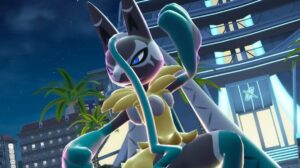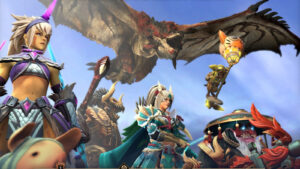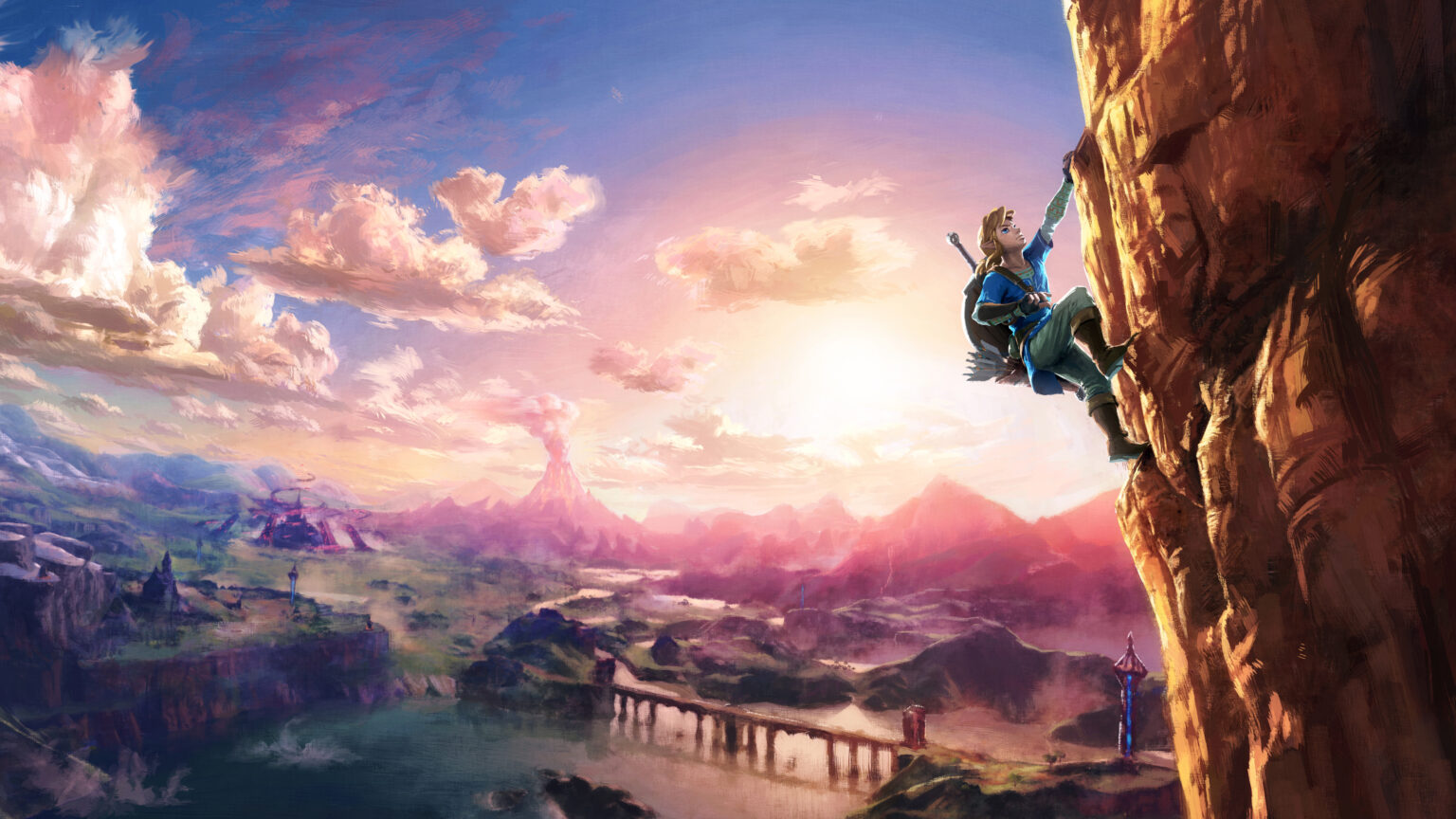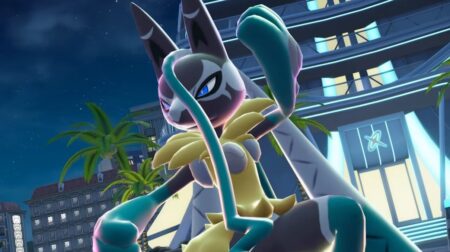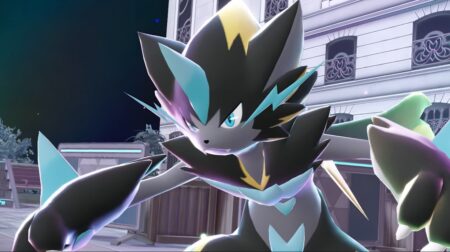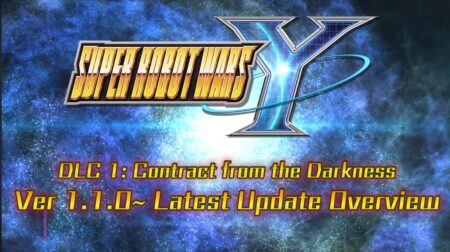There are few games that are able to recapture the sense of wonder and discovery we all had as a child with our first game, or even playing outside. Open world games nowadays all tend to have the same formula and familiar tropes: reach this tower to unlock points of interest on the map. You never find these point of “interest” for yourself, which makes you lose that sense of discovery.
While playing Breath of the Wild, the wonder and discovery never stopped. This game captures once again, after a long time, Shigeru Miyamoto’s original inspiration behind creating the series in the first place — adventure. After nearly a hundred hours in Hyrule and being the legendary hero of yore, I have no hesitation in saying that The Legend of Zelda: Breath of the Wild is the best Zelda game of all time.
Platform Reviewed: Nintendo Switch
Platform Available: Nintendo Switch, Wii U
Developer: Nintendo
Publisher: Nintendo
Release Date: March 3, 2017
Price: $59.99
This review is based on a retail copy purchased by the author.
First and foremost, this is a very different Zelda game than we are all used to. Gone are the staple tropes that have — as time went on — caused the series to become stale and bland. Breath of the Wild does what fans have been clamoring for years: leave us alone. The game understands the players intelligence and not only that, but challenges it. It’s not afraid to tell you “That’s your problem, figure it out.” There were numerous times that characters gave off important — yet vague enough to not be an answer — details in conversations, which lead to mysterious Shrines or possible treasure.
The Shrines are another example of Nintendo foregoing old mechanics and introducing new challenges. Shrines are mini-dungeons scattered throughout Hyrule, each containing puzzles for you to solve or combat trials to over come. And, there’s no excuse to not being able to complete a Shrine, since all the tools are available to you right at the beginning of the game via your Sheikah slate. These abilities are the necessary tools for you to get past any puzzle within Hyrule, even in combat. After each trial is solved or completed, you are rewarded with a Spirit Orb, which are used in exchange for heart containers or more stamina. So, instead of scouring the map for possible heart pieces, you’ll be exploring to find more Shrines, and some may take more than just finding their location.
Shrines aren’t the only thing you’ll encounter on your journey to free Hyrule of Ganon, the world is rich with mysterious locations and treasure to uncover. Hours will melt away as things catch your eye in the distance. This is where Breath of the Wild has beaten most modern open world games, you actually explore the map and go anywhere you want with no invisible walls. You can even climb most surfaces, which makes the boundaries non-existent. There are things being borrowed by other games, such as towers and how they function, but Nintendo didn’t add anything to them. In fact, they took away some things to make you actually do the work, and the game is better off for it. The tower is there to unlock a portion of the map, but that isn’t where the its function ends. You use that tower as a vantage point to see what you can find, not just looking at your map to see what popped up. Gone are the days of mindlessly just going to a point of interest to get some item that just adds to an over-all completion percentage. Things have meaning and on the way to that Shrine, don’t be surprised if something distracts you like a dragon flying like it’s nobody’s business.
The challenge of finding a shrine isn’t the only problem you’ll face, but enemies will definitely stop you dead in your tracks. Death is going to be your friend as you go on your adventure. Prepare to die over and over again, even early on the in the game, especially when you find yourself in unfamiliar territory. Breath of the Wild features the toughest enemies in any Zelda game, with some enemies having the ability to kill you with one swing. Luckily, you aren’t completely left in the dark. Combat is more about using your smarts than actual attacks, so there’s no use in brute forcing your way through that herd of bokoblins. The systems in place for you to outsmart your enemies in Breath of the Wild add to that sense of freedom. You can stun an enemy to make them drop their weapon, then you have a choice of stealing it or dropping a weaker weapon of yours for them to take instead, and that’s only one of the possible routes you can take.
Breath of the Wild is full options and variables that make you handle situations differently every time. Environments differ not only aesthetically, but hazardously too. From the freezing mountains of Lanayru, to the scorching mines of the Gorons, it’s dangerous to go alone. Depending on where you are, you’ll be switching out equipment frequently so you can adapt to certain areas, which can be used against your enemies as well. The elements play a huge role with how you go about the world, but armor isn’t the only solution. You can concoct certain elixirs to temporarily gain immunity to certain weather conditions, or even unconventionally use a torch to keep you warm because fire = warmth.
The elements, however, vary differently when it comes to the dungeons — puzzles and mechanics wise. They’re not named as dungeons or temples per se; instead, they’re called Divine Beasts. Although some elements play more of a role in some Divine Beasts more than others, the way the dungeons are handled makes for some interesting puzzles. Foregoing various puzzles in one dungeon, the Divine Beast itself is a puzzle. This means you can change the form factor of the dungeon in order to complete your objective, similar to a Rubik’s Cube. Sadly, this does mean that you’re not getting your Ice Dungeon or your Fire Dungeon. They no longer feel one with the location or area — even if there are subtle elemental hints — and they all feel the same aesthetically. This goes for the bosses you’ll encounter at the end of each one, too. They don’t have a distinct look or feel to them, with all of them looking like purple goop with Ganon’s signature red hair. Also, they don’t deliver an epic atmosphere or aura to them, rather they feel like a mini-boss you would encounter before the main threat to come. Along with that, there are fewer to complete. You don’t have 8 dungeons to complete and explore anymore, rather there are only four. Despite their lack in number, however, they are still fun and challenging to complete. Not only are the dungeons fun themselves, but how you enter them too. They act as set pieces to get inside the Divine Beast, which offer some of the most intense moments throughout the game.
Accompanying these moments is the music, not only when entering a Divine Beast, but also throughout the game. It’s mostly subtle and is there to give ambiance to any given situation, with the only times being up beat and intense is during boss fights. The music is nothing memorable as say when riding on horse back in Ocarina of Time or Twilight Princess, but it does add that layer of emotion. Some of the music is erratic and jazz-like, especially when encountering things made with Sheikah technology, while others fit in the more high fantasy spectrum.
The visuals of the game are similar to what we had back in Skyward Sword, going for a more cell-shaded look. Locales are breath taking to take in when standing up on mountains or hills, while even the individual blades of grass are articulated and shaded. However, the game does run inconsistently with frame drops during intense fights and even in areas with lots of foliage. The game does run smoother while in handheld mode on the Switch, but that comes at the cost of resolution, where it’s 720p. While docked, the game’s resolution is bumped up to 900p — according to Nintendo — but runs at 30 fps and even experiencing lower frame dips. These, however, are minor at don’t cause any problems gameplay wise, but if you’re very particular with frame rates and resolution, then this may turn you off from the game.
The story takes the backseat throughout most of the adventure, with most of it explained through flashbacks. These flashback are implemented by you locating them throughout the map via pictures taken by Princess Zelda. This way you can get the story at your own pace, while out adventuring. The story itself isn’t anything special, but it is definitely the deepest it has gone in any of the Zelda installments. The voice acting may be off at times, but what each scene is trying to convey is still there. The acting isn’t cringe worthy by any means, but it isn’t Naughty Dog tier either. It’s more similar to when Anime is dubbed to english; it gets the job done. Link, however, is still the silent protagonist, who acts as a conduit for you.
Overall, Breath of the Wild is the game to have on your Switch or Wii U. Not only that, but it’s one of the rare phenomenon type of games that come around once in a blue moon. Pokémon was one, Skyrim was one, and — without a shadow of a doubt — Breath of the Wild is one too. Not many games are able to emulate the sense of adventure and wonder that Breath of the Wild has; it’s a game you’ll be playing for a long time and one you’ll definitely keep coming back to. The Legend of Zelda: Breath of the Wild is a game of legends and one you don’t want to skip out on
10
All-TIME-FAVE
I HAVE NOTHING MORE TO SAY, BUT YOU’LL MISS YOUR GAMING LIFE IF YOU DON’T HAVE THIS GAME.
Read our Review Policy here to know how we go about our reviews.
